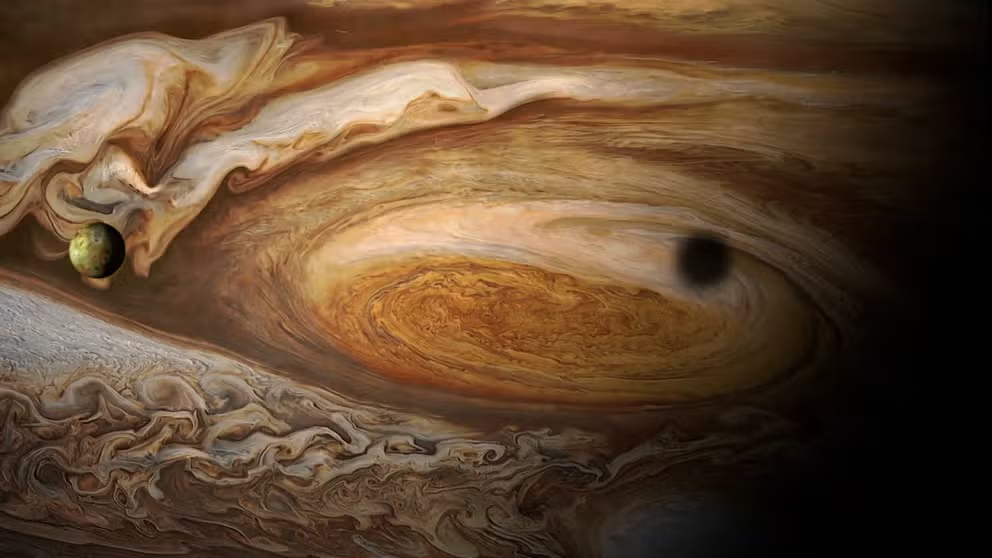Voyager 1 having trouble phoning home as decades-old craft travels through interstellar space
Resolving the issue comes with certain complicating factors, such as the age of Voyager and the time commands sent from Earth take to reach the spacecraft.
FILE: Exploring Jupiter's Great Red Spot—the biggest storm in our solar system
Famous for its Great Red Spot, Jupiter is a gas giant with some of the most fascinating weather in the solar system.
NASA announced this week that the Voyager 1 spacecraft has been unable to send science and engineering data to Earth.
For more than 45 years, the spacecraft has been flying away from Earth, reaching far beyond the planets and transmitting its findings back home.
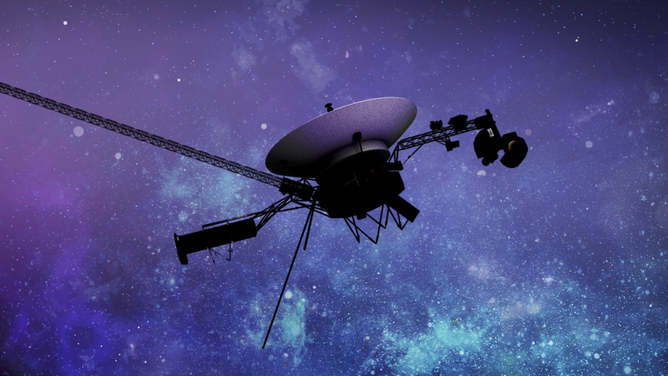
Artist’s illustration of one of the Voyager spacecraft.
(Caltech / NASA-JPL / NASA)
The technical hiccup preventing recent transmissions involves two components on Voyager 1: its three onboard computers, known as the flight data system (FDS), and one of the spacecraft’s subsystems, known as the telemetry modulation unit (TMU).
The FDS collects data gathered by the science instruments on board, along with data regarding the status of the spacecraft itself, according to NASA. This information is then taken by the TMU, which transmits it back to Earth in various combinations of binary code.
However, the transmissions sent by the TMU recently are a repeating pattern of the binary code, NASA said.
What the Voyager team is doing to resolve the issue
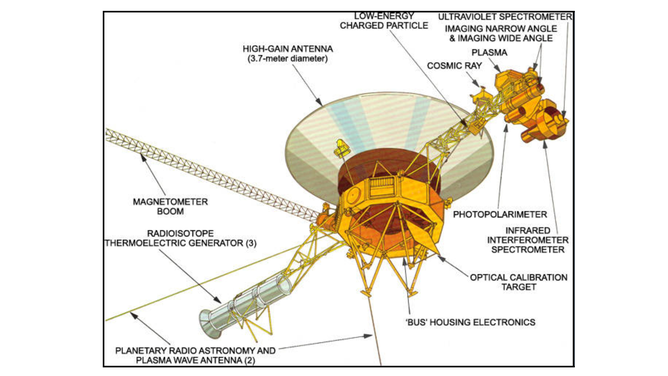
A schematic showing the science experiments on Voyager.
(NASA / NASA)
The Voyager team has come to the conclusion that the source of the issue is the FDS. To troubleshoot the issue, NASA said the Voyager team attempted to restart the FDS last weekend in hopes of returning it to a state prior to when the issue began.
The restart did not end up resolving the issue, the agency noted.
VOYAGER 1 CONTINUES TO OFFER NEW MYSTERIES FROM INTERSTELLAR SPACE
Hurdles that come with troubleshooting Voyager 1
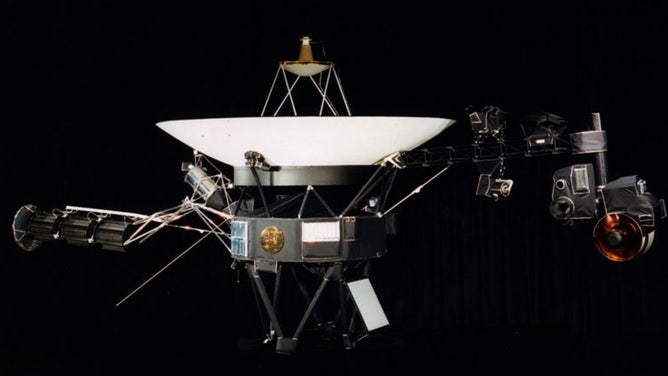
Image of Voyager.
(NASA / NASA)
Resolving the issue comes with certain complicating factors, according to NASA.
One of which involves the fact that Voyager 1 was launched more than 45 years ago, the agency said. This means that scientists trying to fix the current issue are having to consult decades-old documents written by engineers who hadn’t foreseen issues such as the one seen today.
Without this guidance, the present-day Voyager team is having to take additional time to understand how new commands sent to the spacecraft may impact its operations.
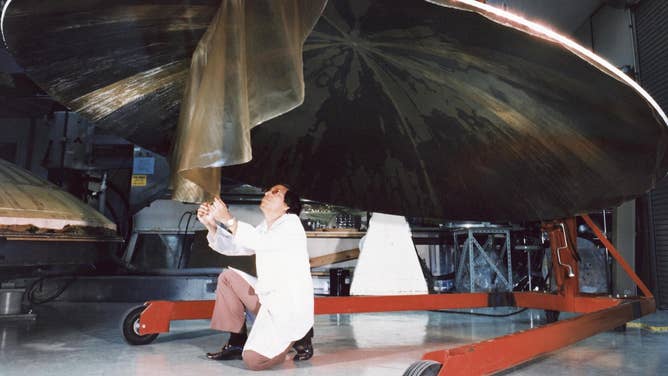
Archival image showing an engineer on the Voyager team working on the construction of the dish-shaped Voyager antenna. July 9, 1976.
(NASA/JPL-Caltech, NASA/JPL-Caltech Photojournal / NASA)
Another complicating factor involves how long commands take to reach the spacecraft. According to NASA, commands sent by mission controllers on Earth take 22.5 hours to reach Voyager 1, which is currently more than 15 billion miles from Earth.
NASA'S VOYAGERS GET SOFTWARE UPGRADES TO PROLONG LIVES OF 1970S SPACECRAFT
This delay translates to engineers waiting 45 hours to see the outcome of the command they sent.
The historic Voyager mission
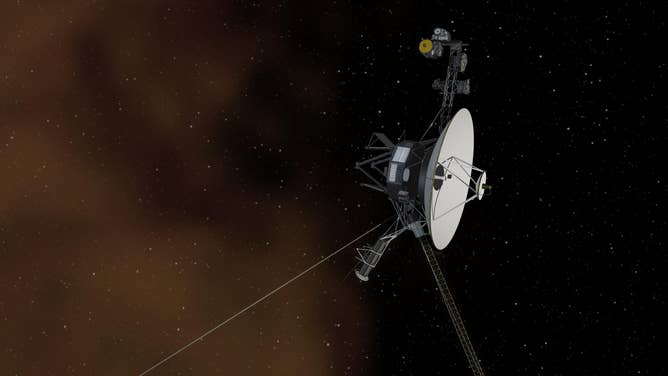
An artist's concept of Voyager 1 entering interstellar space, or the space between the stars. Interstellar space is filled with plasma, ionized gas (shown as a brownish haze here), that was cast off by giant stars millions of years ago, NASA said.
(NASA/JPL-Caltech, NASA/JPL-Caltech Photojournal / NASA)
Voyager 1 and its twin Voyager 2 were launched in 1977 with a primary mission to explore Jupiter and Saturn. After reaching the two gas giants between 1979 and 1981, NASA said the mission was extended and expanded to incorporate encounters of all the gas giants and has since flown beyond the realm of the planets.
VOYAGER 1 CONTINUES ZOOMING THROUGH INTERSTELLAR SPACE 45 YEARS AFTER ITS LAUNCH
On Aug. 25, 2012, Voyager 1 became the first human-made object to reach interstellar space and enter an area beyond the Sun’s realm of plasma influence, according to NASA. In doing so, it became the most distant human-made object. Voyager 2 has not reached interstellar space nor left the Sun’s realm of plasma influence.

A artist's concept showing the general locations of Voyager 1 (object in brownish-orange region) and Voyager 2 (object in gray-blue region). The yellow dot is the Sun.
(NASA/JPL-Caltech, NASA/JPL-Caltech Photojournal / NASA)
NASA noted that both Voyagers 1 and 2 carry an eight-track tape player for recording data. To compare how much data they can manage with modern technology, the spacecraft have approximately 3 million times less memory than modern cellphones, and they transmit data about 38,000 times more slowly than a 5G internet connection.
The spacecraft were originally built to last for five years, NASA said. After being in space for nearly 10 times that, Voyager has become NASA's longest-operational mission.
